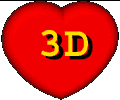 |
RailRoads Real/Model |
The love of the railroad, as a
history maker and iconic mode of transport that led the expansion
westward in America, has promoted restoration of many old
locomotives and rail-lines into a rail-fans paradise.
Modelers, too, focus on the re-creation of history in motion.
3D is THE way to capture the essence of both real of model
railroads. The age of steam features engines that are
organic beasts with vapors swirling and smoke rising in turbulent
plumes, as steam-punk valves, gears, and tie-rods push the
monsters forward. Ideal subjects for the 3D video camera! |
 |
Microscope Photography |
John's microscope photography
includes imaging microscopic crystals using polarized light,
making videos of crystal growth and other microscopic fluid
dynamic events in oil and soap films, converting crystal imagery
into 3D by focal stacking and other methods, and more recently (in
2021 +) constructing giga-pixel composite pictures of tiny organic
crystals by stacking and stitching thousands of individual images
together into a single file that can be rendered as a huge
wall-print or panned and zoomed over the web. |
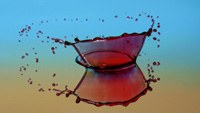 |
High Speed |
3D images of
short-time events are photographed with short duration flash guns
(down to about 500 nanoseconds) and
precise timing. Subjects range from liquid drop
collisions to ballistics (bullets passing through various
objects). For the latter, both subsonic velocities (with air-rifles, up to 50
caliber) as well as supersonic speeds (with .44 magnum and other "launch
devices") have been used. (2005-2011) |
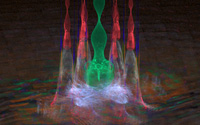
|
Fractals |
Fractal flames, strange attractors,
and Mandelboxes are stunning in 3D as both stills and as "morphing" videos
made by slowly varying the parameters in the iterative formulae
used to calculate the fractals. Strange attractors were
discovered by Edward Lorenz way back in 1963, and fractals were
defined by Benoit Mandelbrot in 1971. But neither have been
routinely constructed and observed in 3D until recently. We
were inspired to generate several videos of these objects,
including 3D "Mandelbulbs" and related objects recently
described by Daniel White, Paul Nylander, and others. (2007
- 2013) |
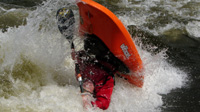 |
White Water |
Flying water is
a fantastic subject for 3D photography. Colorado has great
mountain runoffs, and is home to a number of kayak festivals and
competitions each spring. Modest telephoto imaging with
a high shutter speed (and good positioning) is key to capturing
the moment. 3D video, especially stop action and slow
motion, is useful to decipher the acrobatic moves of
professional rodeo kayakers. (2007, 2010) |
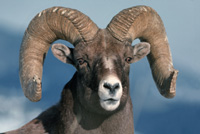
|
N. & S.
American Wildlife |
From 1971 to 1995, Prof. Hart was an avid
wildlife photographer (in 2D). He also did some
wildlife photography using direct dual-camera 3D acquisition.
Some of his early N. American 2D images have been made into stereos by a process called
2D-to-3D conversion wherein a single flat picture has its elements
judiciously shifted left or right and layered into a second
photograph to give a stereo pair. When pixels are shifted,
the hole created must be filled in with compatible data (which
doesn't really exist, and must be 'manufactured' or synthesized in
some way such as cloning). The Ecuador images (Galapagos) shown
here are all native stereoscopic (V3 twincam). |
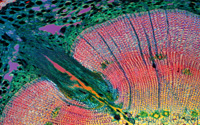
|
Micro - Bio |
3D microscopy of biological and botanical
objects is carried out using the image stacking depth-of-field
enhancement technique, and other methodologies. In
image stacking, a series of "slices" at different focal planes are
combined into a single high-resolution all-in-focus pictures.
A left and a right image can be made separately after tilting the
stage, or occasionally a good stereo image can be extracted from a
single image stack in what is called a 'synthetic stereo'.
(2004) |
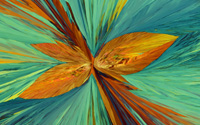 |
Micro-Chem |
3D microscopy of chemical mixtures, melted by
heating and then allowed to solidify in a thin layer under a
microscope, provide unusual and incredibly beautiful subjects
for stereoscopy. The crystals are observed with polarized
light, in a manner that produces very colorful imagery.
This procedure dates back to Isaac Newton.
The 3D effect is obtained by image stacking (see Micro-Bio,
above), or by employing a method where narrow
wavelength illuminations are used to give estimates of the amount of optical rotation imparted
by, and the angle of, the birefringent material (which leads to a measure of it's thickness).
(1984-88, 2000-2004, 2014+) |
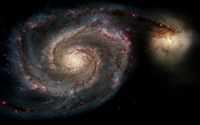
|
Cosmos |
In 2D - to - 3D conversions of Hubble space
telescope imagery it is imagined how the universe might appear to a
wide-eyed observer. Physical-chemical models, or just pure
artistic whimsy, are used to make the stereo views. Morphing
the objects provides a 3D motion-effect for video clips. The
images presented under "Cosmos"
on the homepage are part of a larger film about the cosmos which is available from
Kallistimedia.
(2007-2009, 2011) |
 |
Mountains |
Primarily landscape 3D's along the Rockies,
from Canada to New Mexico, with a little mountain wildlife
and a couple of climbing activities thrown in. (2000-2004) |
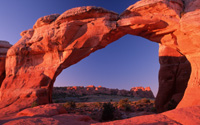
|
Canyons |
Prof. Hart's original interest in 3D
arose in 1999 when he started hiking in canyons of the American
southwest (Arizona, Utah, Colorado). The narrow diverging
passageways and incredible colors seemed ideal subjects for
stereo photography. After initial efforts in walk-in
canyons, he then explored more technical venues involving roped
descents, pack-rafts, and the like, in various locations
world-wide. His favorite canyons have big water-flows,
like the ones in Spain and on Reunion Island. (1999 -
2008) |

|
Flowers |
Always a favorite amongst 3D photographers,
macro photography of flowers in stereo illustrates nature's
intricacies and inner beauty. Both beam-splitter macros and
enhanced depth-of-field (focus stacked) high-magnification 2-view photography of
internal flower structures are shown. (2007) New work
with image stacking microscopy is on-going in 2018-2019+. |
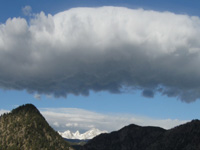 |
Time-Lapse |
It is possible to use two digital
single lens reflex cameras, or even consumer digicams, to make very-high-quality 3D videos
of slowly moving phenomena. The frame rates are typically
low;1 frame per second or longer. When played back at
normal speed (24 or 30fps) the action is dramatically sped up.
This allows the sped-up observation of slow phenomena, like clouds
in motion, or to watch normal human activities progress at a such
a rate that the may appear humorous. (2006-2008) |
|
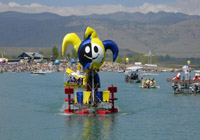 |
Projects and Funky-Stuff |
Every once in a while some unusual event
happens that turns out to be pretty neat for 3D photography.
Examples include the Kinetic Challenge races that used to happen
at the Boulder Reservoir, and open-swim days for dogs at Scott
Carpenter pool. (2002+). There is always a project happening, of one
form or other (like stereo photography). In 2011-2012 it was electric-assist biking and triking. A
while back (starting in 1995, and lasting a few years) it was
outdoor model railroading. |
|
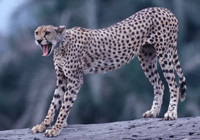 |
African Wildlife |
This part of the gallery contains a large
number of 2D-to-3D conversions (by www.william3D.com)
of John's wildlife photographs taken during do-it-yourself
camping safaris to Kenya, ZImbabwe, Botswana, Namibia and South
Africa done primarily in the 1970's and 80'. Along with
the 3D images, there is a 2D book with many stories about
adventures in the African bush featuring close encounters of the wild
kind. Access the
book by clicking here. (added in Jan. 2016) |
